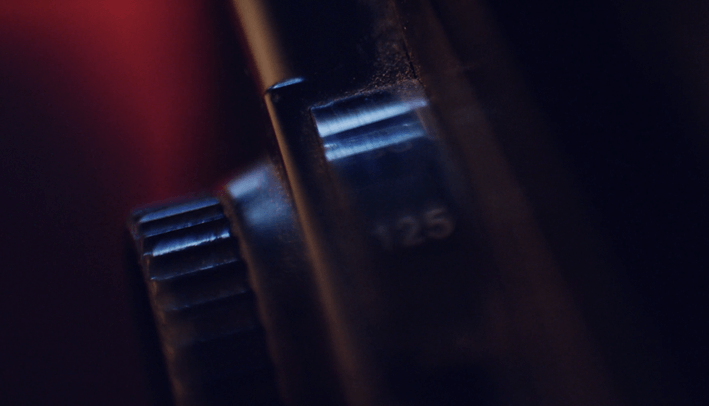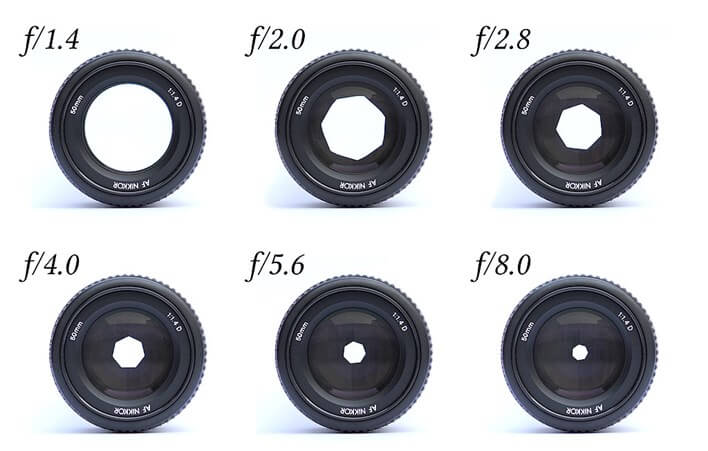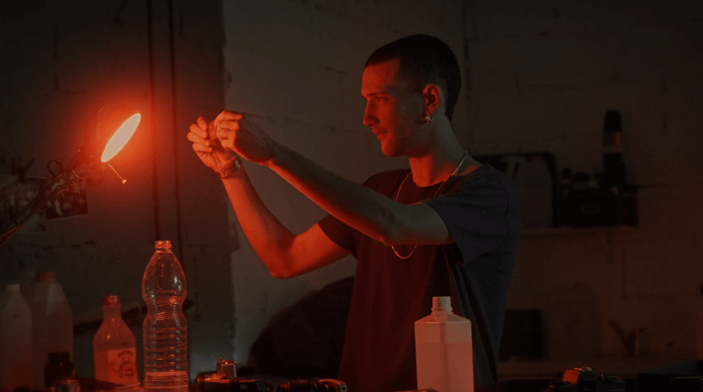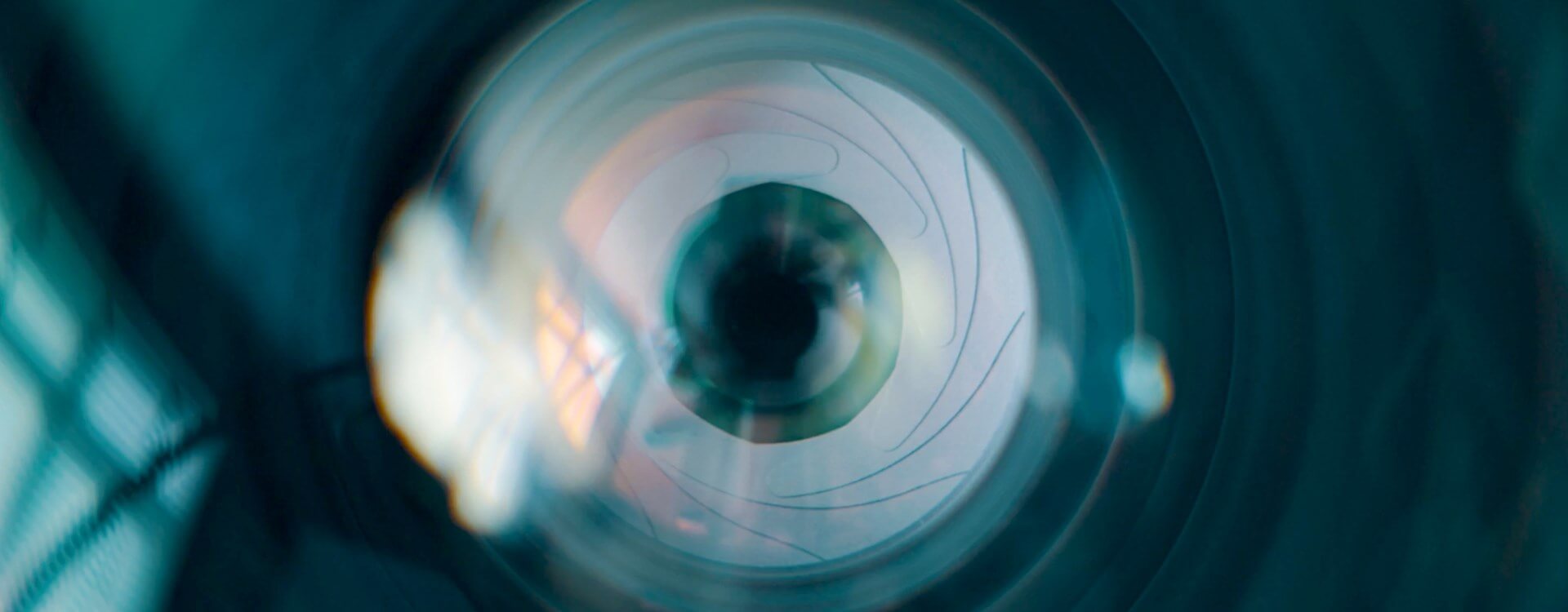Highlights
Table of Contents
Explore article topics
Whether you are shooting stills or video, there are a few fundamentals that you need to know in relation to how your camera and its optics work. One of those is aperture. So if you’ve ever wondered ‘What is aperture?’, or indeed anything else related to camera aperture, we’re here to walk you through it.
What is aperture?
Aperture means ‘hole’, ‘gap’ or ‘opening’. Light passes through the aperture in your camera’s lens to reach your camera’s sensor, or film if you’re old-school, to create an image.

By adjusting your lens’ aperture, you will have both a technical and a creative impact on your image. From a technical perspective, the larger the aperture you use, the more light will reach your sensor. Creatively, a large aperture will afford you a shallow depth of field. The opposite is true if you choose a smaller aperture: less light will be able to hit your sensor, but you will bring more of your scene into focus.
Measuring ƒ-stops
Lenses come with variable apertures that are measured in ƒ-stops. An aperture of ƒ/1.8 is considered large, while an aperture of ƒ/16 is regarded as small. If you’re wondering why the smaller number represents a larger aperture, it’s because ƒ-stops are calculated by the size of the gap in relation to the focal length of the lens. At a focal length of 100mm, the physical size of an ƒ/2.0 aperture will be 50mm. A 50mm lens with an aperture of ƒ/8.0 will have an opening measuring 6.25mm.

Image by KoeppiK
A quick word on cinematic lenses. These will use T-stops rather than ƒ-stops. T-stops offer a precise measurement of light rather than a measurement of the gap size in the lens relative to its focal length, which is what an ƒ-stop is. The values are not quite the same but are very close.
Video exposure
When you shoot stills, you control the exposure of your images by adjusting the aperture, shutter speed and ISO used to capture them. If you want to shoot with a smaller aperture for a deeper depth of field but need more light to nail your exposure, you can opt for a longer shutter speed and/or a higher ISO.
When it comes to shooting video, you will be much more reliant on adjusting your aperture to control your exposure. You don’t have so much flexibility with your shutter speed because that will be determined by your frame rate.
Our article on shutter speed and shutter angle explains this in more depth, but let’s recap. To give a ‘normal’ feeling to your video exposure, you will want to use a shutter angle of 180º. If you are shooting for a cinematic look, you will want to record at a frame rate of 24 frames per second. A 180º shutter angle at 24 frames per second means that you need to shoot with a shutter speed of 1/50 second. Unless you include a slow-motion sequence in your movie, you will not vary its frame rate during shooting. This means that your shutter speed will remain constant, too.

When you have a too bright and over-exposed scene, you can use a smaller aperture to reduce the light levels reaching the sensor. But if you don’t want the deeper depth of field that comes with the smaller aperture, then try placing a neutral density filter over your lens instead. The neutral density filter should block out some light and help to control the exposure without bringing too much of the scene into focus.
If you need to increase the light levels to get the correct exposure, you can use a larger aperture. If your aperture is already as large as it can go, or if you really don’t want a shallower depth of field, you have two options. First, you can increase the ISO, but do be careful that you don’t introduce too much noise into the scene. Second, you can increase the intensity of the lights on your set. Selecting your camera’s aperture against ISO and lighting can be a bit of a balancing act, so you might need to experiment a little to get your video exposure just right.
Get unlimited royalty-free 4K footage
Judging depth of field
Dedicated cinematic lenses usually have a ring on the lens itself that you use to adjust the aperture. It makes for smooth transitions. If you’re using a lens that doubles as a photography and videography lens on a DSLR or mirrorless camera, you are most likely going to control its aperture from a dial. However, some manufacturers, such as Sony and Fujifilm, do produce lenses with aperture rings, and you might want to take a look at those.
Some DSLR cameras have a depth of field preview button to help you judge the depth of field and select your DSLR’s aperture. But not all do, and when it comes to mirrorless vs. DSLR, this is where mirrorless cameras probably have the advantage. Mirrorless cameras’ electronic viewfinders give you a much easier means to assess video exposure and adjust the aperture according to your aesthetic.
When choosing a camera for making videos, there are many considerations to be made, not just on the ability to preview your depth of field and exposure. If you’re not sure, we have two articles that can help you out: one looks at the best mirrorless cameras, and the other weighs up the best DSLR cameras.
What’s the best aperture for video? It depends on many different factors, from your creative vision to the amount of light you can control on your set. But it’s all part of the fun of filmmaking.
Daniela is a writer and editor based in the UK. Since 2010 she has focused on the photography sector. In this time, she has written three books and contributed to many more, served as the editor for two websites, written thousands of articles for numerous publications, both in print and online and runs the Photocritic Photography School.
Share this article
Did you find this article useful?
Related Posts
- By Jonathan Mateer
- 7 MIN READ
- By Jessica Peterson
- 5 MIN READ
- By Robert Hardy
- 4 MIN READ
Latest Posts
- 25 Apr
- By Josh Edwards
- 4 MIN READ
